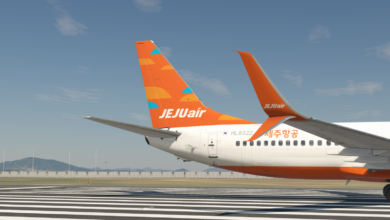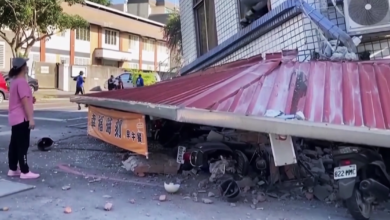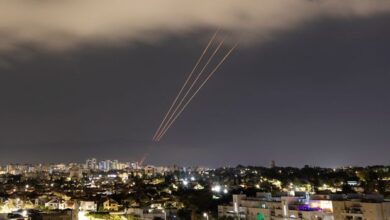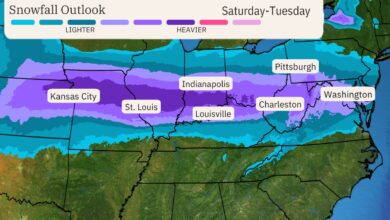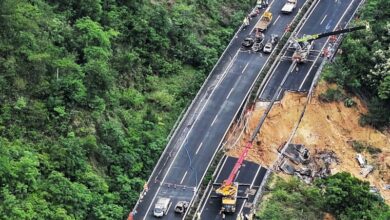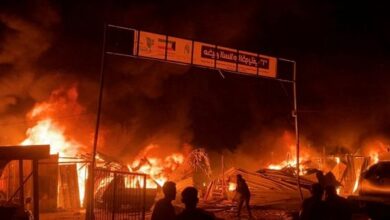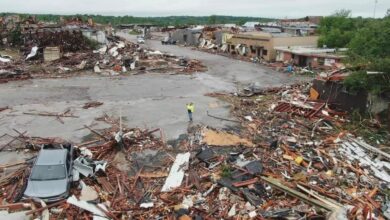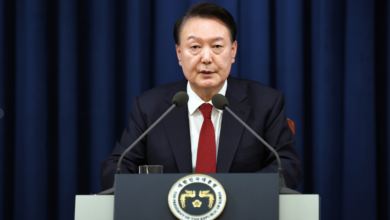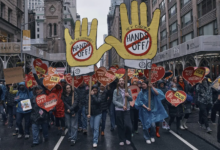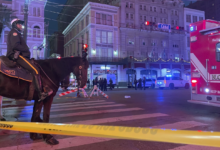The Helicopter Carrying Iran President Ebrahim Rais, Foreign Minister Crashed

The search for the helicopter carrying Iran President Ebrahim Raisi has captured global attention after the aircraft encountered a ‘hard landing’ in a mountainous region amidst heavy fog. This incident, following a visit to Azerbaijan, has prompted a massive search and rescue operation, raising concerns about the safety of the President and his accompanying officials.
Details of the Incident
Circumstances of the Crash
The helicopter carrying Iranian President Ebrahim Raisi crashed while traversing mountainous terrain. Initial reports suggest that adverse weather conditions played a significant role in the incident. The crash has prompted a widespread search and rescue operation, involving multiple agencies and international support.

Initial Reports from Iranian Media
Iranian state media were quick to report on the incident, emphasizing the challenging conditions at the crash site. Reports highlighted the darkness and rainy, muddy conditions that have complicated the rescue efforts. The urgency and severity of the situation were underscored by the immediate response from Iran’s military resources.
U.S. State Department’s Response
The U.S. State Department has expressed its concern and is closely monitoring the situation. In a statement, they acknowledged the complexity of the rescue operations and offered condolences. The international community, including several countries, has extended offers of assistance, reflecting the global attention the incident has garnered.
Search and Rescue Operations

Current Efforts to Locate the Helicopter
The search for the missing helicopter carrying Iran’s president is intensively underway, with over 40 teams deployed across the mountainous terrain of East Azerbaijan province. Despite the challenging weather conditions, efforts are bolstered by the use of drones, which provide crucial assistance in adverse conditions.
Challenges Faced by Rescue Teams
Rescue operations are severely hampered by the inclement weather, including heavy rain and fog, which render aerial searches impossible and complicate ground efforts. The terrain’s muddy conditions further impede the rescue teams, making the search both dangerous and slow.
International Response and Assistance
Countries around the globe have expressed their readiness to assist in the search and rescue operations. While specific details of international aid are yet to be disclosed, the global community’s concern and offers of help underscore the incident’s seriousness and the urgency of a successful rescue mission.
Impact on Iranian Politics
Immediate Political Repercussions
The incident involving President Raisi’s helicopter could significantly shift the political landscape in Iran, especially given the current tensions and the recent hardline policies. The sudden absence of a key figure might lead to immediate instability within the government as factions within the political system vie for influence.
Security Protocols and Concerns
This event will likely prompt a thorough review and possible overhaul of security measures for high-ranking officials in Iran. The focus will be on enhancing the safety protocols for political leaders, particularly during travel in volatile regions.
Potential Successors and Power Dynamics
In the event of a vacancy in the presidency, several key figures could emerge as potential successors. The dynamics within Iran’s political hierarchy could see a shift, with hardliners possibly consolidating power further. This incident might accelerate discussions about succession and power distribution among Iran’s elite.
Safety Concerns and Aviation Protocols
Helicopter Safety Measures
In light of the recent incident, helicopter safety measures are under scrutiny. The helicopter involved was a U.S.-made Bell 212, known for its robust design but also for requiring strict maintenance protocols. Key safety measures include regular maintenance checks, pilot training programs, and adherence to flight operation guidelines.
Impact of Weather on Flight Safety
The crash has highlighted the critical impact of weather on flight safety. Iranian state media attributed the adverse weather conditions as a significant factor in the crash. This incident underscores the need for helicopters to be equipped with advanced navigation and weather forecasting technologies to enhance safety in adverse conditions.
Review of Aviation Standards in Iran
The current standards and protocols for aviation safety in Iran are now under review. This includes examining the efficacy of the existing regulations and how they can be improved to prevent future incidents. The review will likely lead to updated regulations and possibly more rigorous enforcement to ensure higher safety standards.
Media Coverage and Public Reaction

Local and International Media Response
The media has been quick to cover the incident, with numerous outlets providing continuous updates. The intensity of the coverage reflects the gravity of the situation involving a high-ranking official. Various platforms, including traditional news and digital media, have been active, ensuring a broad dissemination of information.
Public Sentiment in Iran
The public reaction in Iran has been a mix of concern and speculation. The uncertainty surrounding the incident has led to a heightened public discourse, with many turning to social media to express their thoughts and seek updates.
The Role of Social Media in Disseminating Information
Social media platforms have played a crucial role in spreading news about the crash. They have enabled real-time updates and facilitated a space for public dialogue. This digital engagement highlights the significant impact of social media on modern communication.
Historical Context of Aviation Accidents in Iran

Circumstances of the Crash
Iran’s aviation history is marked by a series of incidents that highlight the challenges faced by its air fleet, which largely dates back to before the 1979 Islamic Revolution. The difficulty in obtaining parts due to international sanctions has compounded these issues, often leading to critical situations.
Initial Reports from Iranian Media
Iranian media, while often under state control, has played a crucial role in reporting initial details about aviation accidents. This coverage is vital for raising public awareness and subsequent government accountability.
U.S. State Department’s Response
The U.S. State Department typically issues statements following significant aviation incidents in Iran, reflecting the geopolitical tensions between the two nations. These responses can influence international perceptions and diplomatic relations.
Current Efforts to Locate the Helicopter
Search and rescue operations are often complicated by Iran’s challenging terrain and the state of its aviation technology. Bold efforts are made to mobilize resources quickly, despite these hurdles.
Challenges Faced by Rescue Teams
Rescue teams in Iran face numerous obstacles, from adverse weather conditions to logistical issues stemming from outdated equipment and international sanctions affecting the availability of modern technology.
International Response and Assistance
Global reactions to aviation accidents in Iran vary, with some countries offering technical assistance and others withholding aid due to political tensions. This international dynamic is crucial in shaping the outcomes of rescue efforts.
Immediate Political Repercussions
Aviation accidents can have swift and significant political implications in Iran, often exposing vulnerabilities and prompting calls for policy changes and improvements in aviation safety protocols.
Security Protocols and Concerns
Following major incidents, there is typically a review and tightening of security protocols to prevent future accidents, reflecting an ongoing concern for the safety of high-ranking officials and the general public.
Potential Successors and Power Dynamics
Such incidents can also trigger discussions about potential successors and shifts in power dynamics within the Iranian political landscape, especially if they involve high-profile figures.
Helicopter Safety Measures
Iran has implemented various safety measures over the years, but the effectiveness of these protocols is frequently called into question following accidents. The need for continuous improvement is a constant theme.
Impact of Weather on Flight Safety
Adverse weather conditions have been cited as the cause of several aviation incidents in Iran. This highlights the need for better weather forecasting and more robust flight safety protocols.
Review of Aviation Standards in Iran
The review of aviation standards is an ongoing process, aimed at aligning Iran’s practices with global safety norms, despite the challenges posed by sanctions and outdated equipment.
Local and International Media Response
Media coverage plays a critical role in shaping public perception and government response to aviation accidents. The extent and nature of this coverage can vary significantly between local and international media outlets.
Public Sentiment in Iran
Public sentiment following aviation accidents can range from grief to anger, often acting as a catalyst for demands for governmental transparency and reform.
The Role of Social Media in Disseminating Information
Social media has become a vital platform for the rapid dissemination of information and public mobilization in the aftermath of aviation accidents, bypassing traditional media channels.
Previous Incidents Involving High-Ranking Officials
Iran has a history of aviation accidents involving high-ranking officials, which has had a profound impact on the nation’s political and social landscape.
Safety Record of Iranian Aviation
The safety record of Iranian aviation is a concern, with numerous incidents over the years highlighting the need for significant improvements in both policy and practice.
Comparative Analysis with Global Standards
When compared to global standards, Iran’s aviation safety protocols and practices reveal significant gaps that need to be addressed to enhance safety and reliability.
Impact on Iran-Azerbaijan Relations
Aviation accidents can affect bilateral relations, as seen in the cautious diplomatic engagements between Iran and neighboring countries like Azerbaijan following such incidents.
Broader Geopolitical Consequences
The geopolitical implications of aviation accidents in Iran extend beyond immediate regional concerns, influencing international relations and policy decisions.
Speculations on Policy Shifts
Speculation about policy shifts following aviation accidents is common as stakeholders and analysts assess the potential for changes in both domestic and foreign policy.
Future Implications for Regional Stability
Impact on Iran-Azerbaijan Relations
The recent helicopter crash involving the Iranian President could strain the already delicate relations between Iran and Azerbaijan. The incident might escalate tensions or prompt diplomatic dialogue aimed at stabilizing the situation. Key areas of concern include border security.
Broader Geopolitical Consequences
This event could potentially alter the power dynamics in the Middle East. Increased military activities and alliances might be observed as regional players reassess their strategies in response to the incident. The following points highlight the possible shifts:
- Enhanced military cooperation among Iran-aligned groups
- Reevaluation of diplomatic ties by neighboring countries
- Potential increase in international interventions
Speculations on Policy Shifts
Speculation about policy changes within Iran is rampant, suggesting a possible hardening of positions or a shift towards more open diplomatic engagements. The loss of a high-ranking official could lead to significant changes in both domestic and foreign policies, impacting Iran’s interactions on the global stage.
As the search and rescue operations continue for the helicopter carrying Iran President Ebrahim Raisi, the incident underscores the inherent risks involved in navigating mountainous terrain under adverse weather conditions. The international community watches closely, hoping for the safety of all on board. This event not only highlights the challenges faced by political figures during their travels but also the critical importance of stringent safety protocols in aviation. The outcome of this search will undoubtedly have significant implications, both domestically within Iran and internationally.
Read More:
Google I/O 2024 Update: A New AI Generation for a Smarter Search Experience
Over 100 People were Arrested as NYPD Tactical Units Cleared Protests at Columbia University.
Exciting News: Hailey and Justin Bieber Are Expecting Their First Child!



